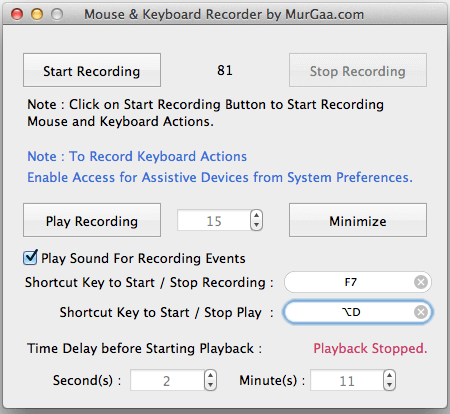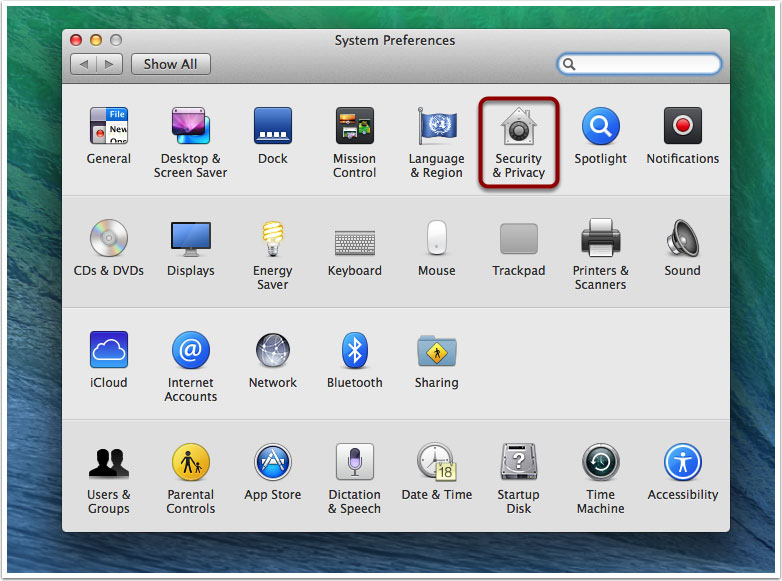

- ENABLE ACCESS FOR ASSISTIVE DEVICES MAC 10.9 HOW TO
- ENABLE ACCESS FOR ASSISTIVE DEVICES MAC 10.9 MAC OS X
- ENABLE ACCESS FOR ASSISTIVE DEVICES MAC 10.9 SOFTWARE
- ENABLE ACCESS FOR ASSISTIVE DEVICES MAC 10.9 CODE
To rectify this, select the Apple symbol in the top left corner of the screen and select System Preferences. This is because you have not enabled access for assistive devices. You may have to click on the padlock in the bottom left first and enter your admin password: Then check the box next to the application you’d like to grant access to (i.e. To fix this, please see this support page from Apple.Īpple’s instructions in the above article asks you to go to System Preferences > Security & Privacy This is because accessibility is not enabled for ClaroRead. Besides that iShowU is a train wreck in Mavericks: sometimes records sometimes doesnt and audio is not very good most of the time.


Been using iShowU for four years and it has been great until the nag to enable assistive devices started.
ENABLE ACCESS FOR ASSISTIVE DEVICES MAC 10.9 MAC OS X
ENABLE ACCESS FOR ASSISTIVE DEVICES MAC 10.9 SOFTWARE
Published by Claro Software on 22nd August 2011 22nd August 2011 Symptoms Gta 5 Free Download Mac Using a bash script to enable access to assistive devices is possible in Mavericks (and also Yosemite) despite the move to a per-app database. 10.Speak under mouse, keyboard echo and prediction doesn’t work in ClaroRead Mac You can also elect to display the Universal Access status icon in the Finder menu bar.
ENABLE ACCESS FOR ASSISTIVE DEVICES MAC 10.9 CODE
Then the application code that I used to have in my main method above moved into the app delegate: #import AppDelegate If you have an assistive device that’s recognized by Mac OS X, select the Enable Access for Assistive Devices check box to allow it to be used throughout the operating system. This is a nib-less, menubar-less application, just like the usual command line application template, but it does have a true event loop, due to the call. First, you have to have a class implementing the NSApplicationDelegate protocol, and that delegate will be where the application code lives, leaving the main method to simply do the following: #importĪppDelegate *delegate = init] Enable Access For Assistive Devices 10.6 Mac OS 10 So Mac OS 10.9 will prompt a dialog for end user permission to enable Accessibility when application uses accessibility APIs.Additionally User has to Relaunch the application after enabling Accessibility. In order to replicate the creation of an event loop within a command line application, more of the guts of a typical cocoa application have to be brought into play. News to me, but obvious in hindsight, just creating a run loop doesn’t create an event loop. The key detail is that I am using a command line application template (I don’t have any need for a UI, so I was trying to keep things minimal).
ENABLE ACCESS FOR ASSISTIVE DEVICES MAC 10.9 HOW TO
So, thanks to Ken Thomases’ question above, I was able to work out how to do this. With Mpge is possible make trojan horse files for Microsoft Windows, Linux and Mac OS X 10.3 Panther, OS X 10.4 Tiger, OS X 10.5 Leopard and OS X Montain Lion 10.8.1. Check the box next to Enable access for assistive devices Recent Posts. Mac OS X 10.9 Mavericks Mac OS X 10.8 Mountain Lion Mac OS X 10.7 Lion Mac OS X 10.6 Snow Leopard.

I am not seeing any keys, even simple ones (it’s been running through my typing of this post and nothing was logged). Mpge is a wrapper of meterpreter (msfconsole, msfpayload and msfencode) of Metasploit Framework directly integrated with Mac OS X Snow Leopard 10.6.8 and with OS X Mavericks 10.9. How to Enable Access for Assistive Devices and Applications on Mac OS X. I’ve looked at the other instances of this question, but they seem to deal with either 1) the application not being assistive-enabled or 2) not receiving certain ‘special’ command keys that one would need CGEvents to receive. Once here, no other logging occurs, regardless of which keys I hit or what application has focus when I hit them.įWIW, I’m trying to write an assistive application, not a key-logger or other evil thing. 17:26:36.055 test registering keydown mask The output received is: 17:26:36.054 test Accessibility Enabled [NSEvent addGlobalMonitorForEventsMatchingMask:NSKeyDownMask NSDictionary* opts = id)kAXTrustedCheckOptionPrompt: AXIsProcessTrustedWithOptions((_bridge CFDictionaryRef)opts) Open System Preferences-> Universal Access (for Mac OS 10.8 Moutain Lion, open System Preferences-> Accessibilty-> Keyboard), tick on 'Enable access for assistive devices'. 10.9+ only, see this url for compatibility: In order to use this application, the option 'Enable access for assistive devices' must be enabled. I’ve seen lots of code examples like the below, but this doesn’t work for me on 10.9.4. I am having trouble with getting an assistive-enabled application (XCode in the development case) to capture global keyDown events.


 0 kommentar(er)
0 kommentar(er)
